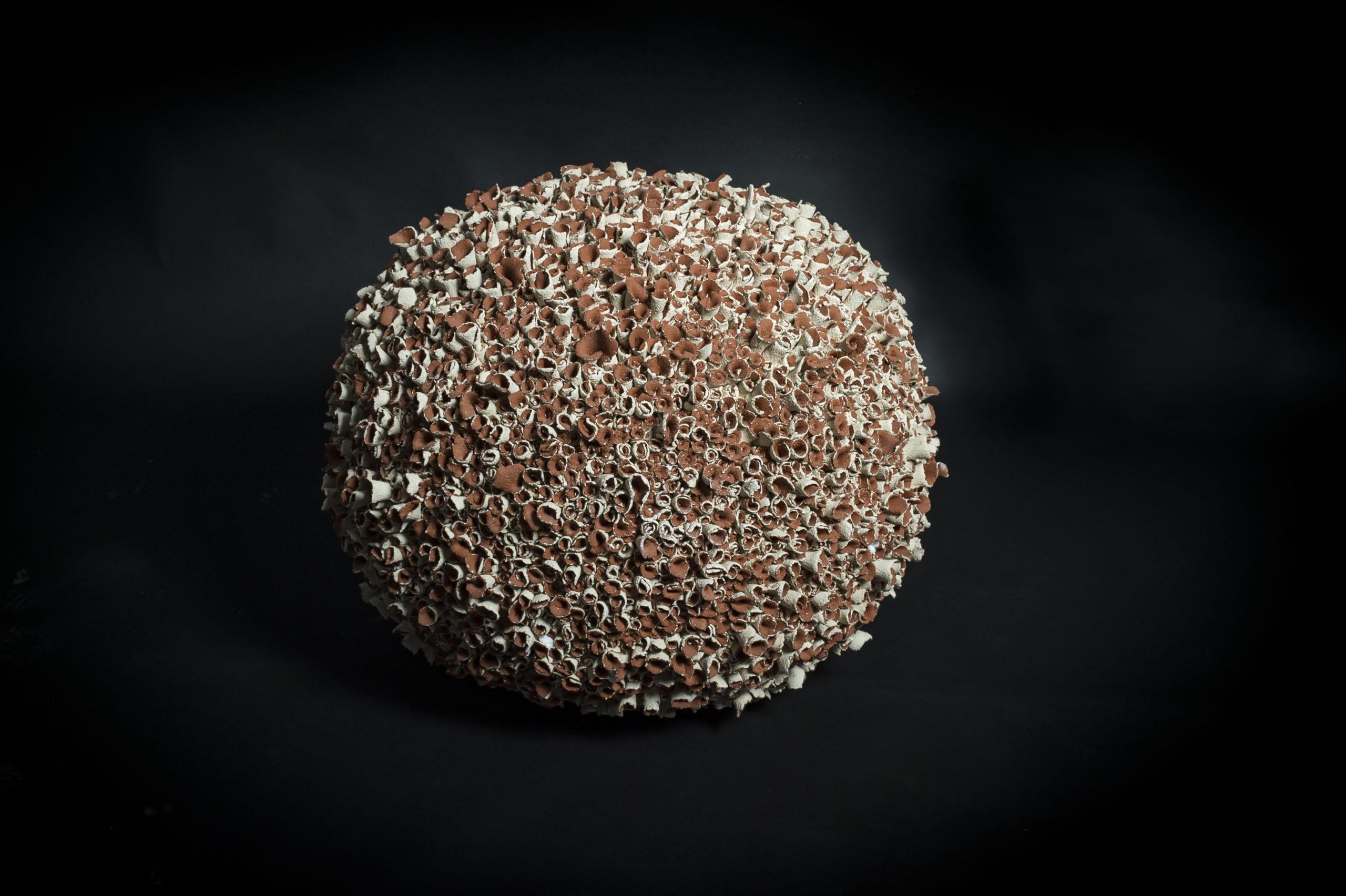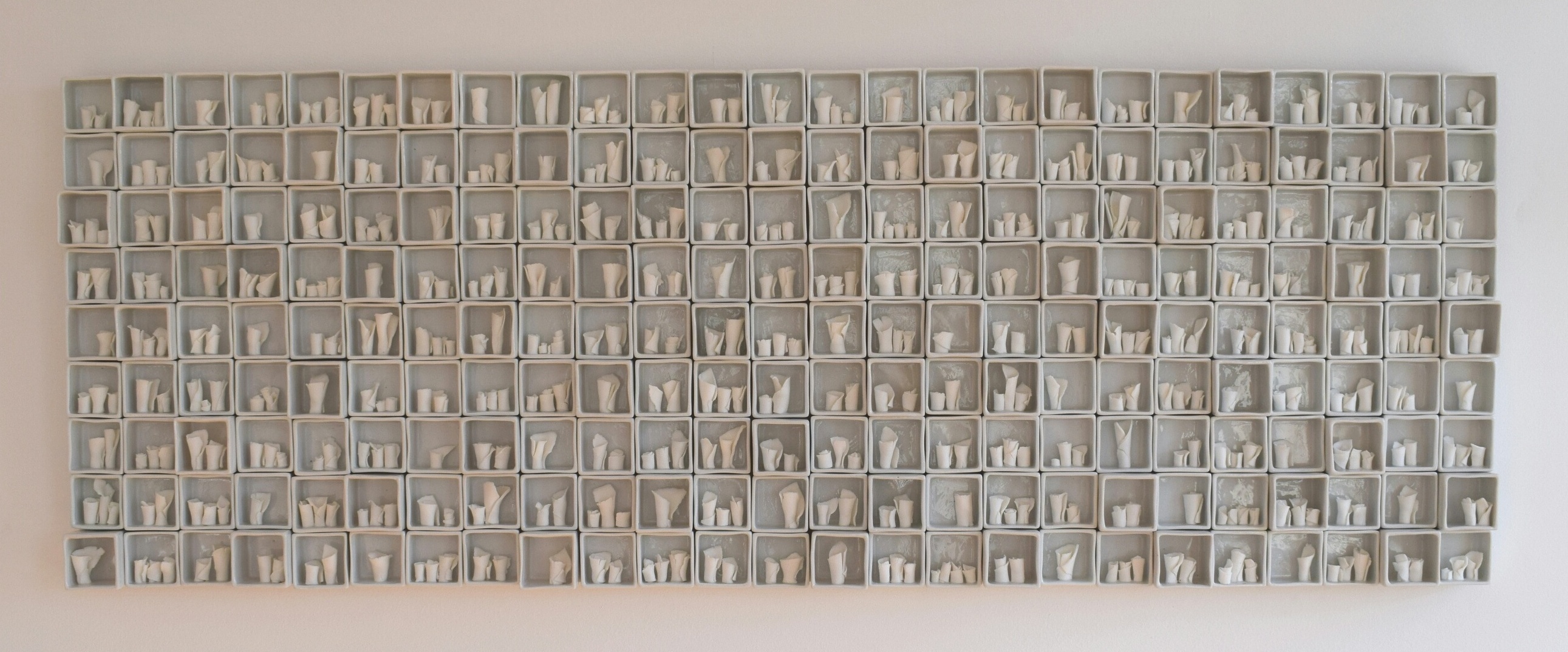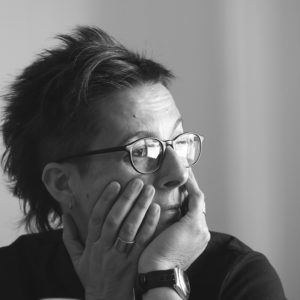Sofia Beça
“It never pleased me the ornamentals nor the conventional things, for that reason I understood that ceramics that can be placed on a table, like a bibelot, did not interest to me, because it is like a decorative object and not like a sculpture”, tells me Sofia Beça. Her works are not made to shine on a table, nor so, at least, to be on a pedestal. As Antonio Vivas said, this artist “represents the force of the new Portuguese ceramics, more uninhibited, freer, even provoking, but always impressive in murals and facilities”. Sofia Beça loves working on real spaces, has done it in Alcora, has done it in Muel, etc, and her works have, in many cases, an open character , that requests the collaboration of other artists, other means, or the spectator, and even of the elements (the fire, the air…), and usually they incorporate an action. Her works are not fully realized by simply being looked at. Even when they are not destined to a public space, her way to use the exhibition hall is heterodox, because often they go straight to the floor, and it does not seem they are exhibited there, but rather occupy and extend the ground, or the wall. It is a setting up a scene; nothing rhetorical, by the way, but put in a scene. The field work, or specific integration in an architecture is her ideal.
From the arts point of view, does not handle other colors other than the ones that derive from the material base, to which only the action of the furnace is added. An immediate chromatic language, therefore, of direct communication between material and addressee, with the ceramist as a mediator. In this mediation, almost magic, takes part, as a key element, the making and the care of all and each one of the elements of the scene, each ceramic stump, in this example, pieces that usually are interchangeable from a grammar point of view, replaceable elements, something arbitrary in number, but which are one by one elaborated with extreme care, as if they were unique.
Sofia Beça justifies herself: “I could make the same work with molds, but for me, it wouldn’t have any enchantment. Each piece, although it seems just as the others, I must do it myself, if not, I have the feeling that it is not mine. And also for that reason I love to use the firewood furnace, because two twin pieces end up distinguishing themselves by the color”.
As Joaquin Vidal worte, the elements are “clay letters that work delicately, with patience and love, until they acquire the appearance and the meaning of the old codices’ letters”. And he adds “nothing lacks meaning or has a random site. The small pieces arrange themselves on their supports based on a lived place and time, grouping themselves, embracing themselves and separating with color or hope.” Sofia Beça manufacturer and craftswoman, friend of the ephemeral thing, but also constructor. Because it’s left that essential sense that gives us, like staging, the set of the pieces of which we spoke, the text written with those letters, the music written with those notes.
I will conclude with one of her sentences: “it does not worry me that the ceramics loses protagonism -she says, because what interests me it is the message that I try to transmit”. It is a ceramics understood as useful of writing, not like an aim in itself. But the text that is written, like all poetic text, is one with the matter with which it is written, with the music of its words, with the ceramics own essence, that is what speaks to us.
Alejandro Ratia







